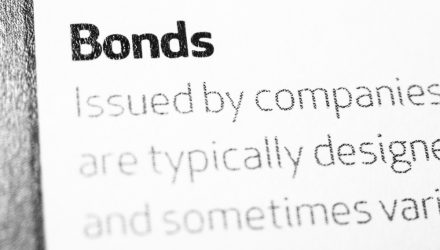Multi-factor strategies aren’t just for equity investors, and it helps to implement this same opportunity screener within the corporate bond market. Viewing corporate bonds through a multi-factor lens can help investors identify debt issues that can remain resilient in a time of uncertainty amid the coronavirus pandemic.
“The investment philosophy underpinning multi-factor investing is to use a set of diversified factors, such as quality, value, low risk, and momentum, to rank and select corporate bonds We blend value criteria – selecting bonds with attractive yield premiums relative to their credit risk – and quality and low-risk indicators to avoid the riskiest issuers. The result tends to be an effective balance,” wrote Charles Cresteil in a BNP Paribas Investor’s Corner article.
Even when global economies are able to get past the pandemic, multi-factor strategies in bonds can still be an essential tool during the recovery process.
“During the recovery, we believe there is also reason to expect multi-factor strategies to perform well in relative terms,” Cresteil wrote. “Indeed, these strategies have tended to generate the most outperformance just after a market fall when dispersion across issuers creates many opportunities to earn alpha returns.”
Until then, here are a pair of near-term corporate bond ETFs to consider:
- Vanguard Short-Term Corporate Bond ETF (NASDAQ: VCSH): VCSH tracks the performance of a market-weighted corporate bond index with a short-term dollar-weighted average maturity–the Bloomberg Barclays U.S. 1-5 Year Corporate Bond Index. VCSH debt holdings mirror those found within the index, so U.S. dollar-denominated, investment-grade, fixed-rate, taxable securities issued by industrial, utility, and financial companies comprise the debt portfolio. Furthermore, in order to curb volatility in the bond markets, maturities are relatively short-duration issues–between 1 and 5 years until maturity.
- SPDR Portfolio Short Term Corp Bd ETF (NYSEArca: SPSB): SPSB seeks to provide investment results that correlate with the Bloomberg Barclays U.S. 1-3 Year Corporate Bond Index. Once again, O’Leary would benefit from the reduced exposure to volatility with SPSB’s investment in shorter-duration debt with maturities less than three years. In addition, SBSP minimizes credit risk by constructing a debt portfolio that contains only investment-grade bonds with companies that are less likely to default.
An Active Income Option
For fixed income investors seeking yield, they can look to the Principal Active Income ETF (YLD). YLD is an actively managed fund that seeks to achieve its investment objective by investing its assets in investment grade and non-investment grade fixed income securities and in equity securities. The fund’s Sub-Advisors, actively and tactically allocates the fund’s assets among fixed income securities and equity securities in an effort to take advantage of changing economic conditions that the Advisor believes favors one asset class over another.
For more market trends, visit ETF Trends.


